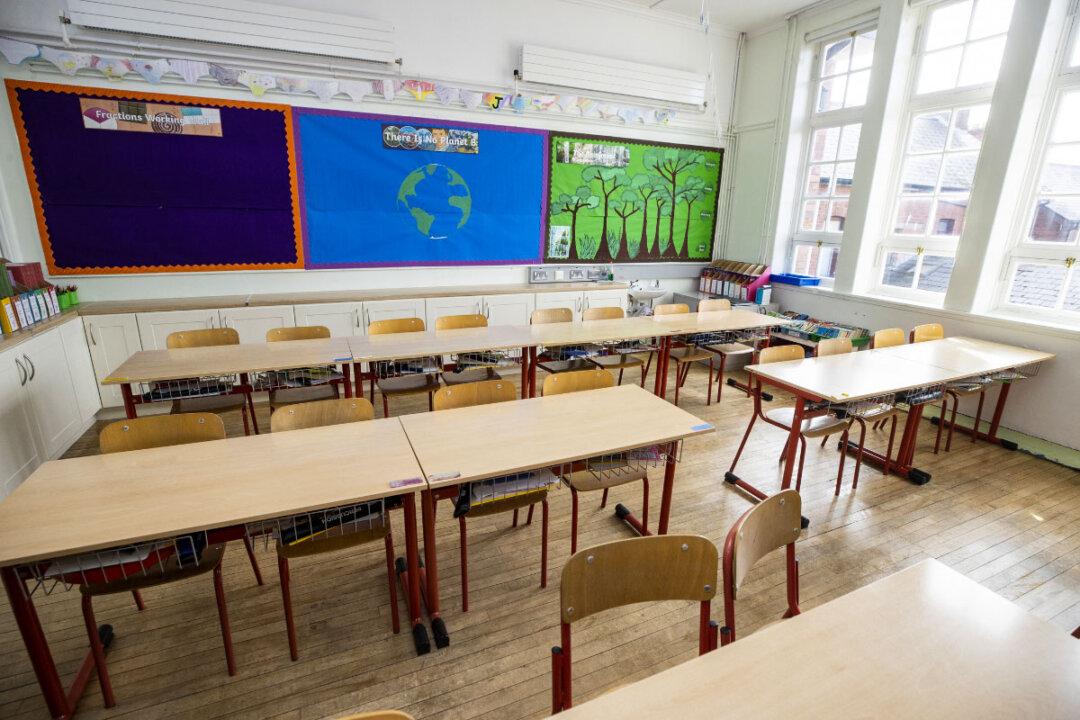The number of suspensions in schools across England rose by 12 percent in a year and are nearly double the number from before the COVID-19 pandemic era, government figures show.
The suspension rate increased from 3.13 to 3.50 per 100 pupils.
The latest figure is 93 percent higher than in the spring of 2019, when there were 153,465 suspensions.
There was also a slight rise (2 percent) in permanent exclusions, increasing from 3,107 to 3,039.
Disruptive Behaviour
However, the number of suspensions and permanent exclusions declined between autumn 2023 and spring 2024. In autumn 2023, there were 346,279 suspensions and 4,168 exclusions.The Department for Education (DfE) noted that exclusion figures are typically higher in the autumn term than in the spring.
Figures show that the most common reason for suspensions and expulsions is “persistent disruptive behaviour”—in line with previous years.
Last spring, there were 176,200 suspensions where the reasons included persistent disruptive behaviour, representing more than half (51 percent) of all reported reasons.
Disadvantaged, SEN Suspended at Higher Rates
The DfE said that SEN pupils and children classified as disadvantaged through their eligibility for free school meals (FSM) “continue to have some of the highest rates of suspensions and permanent exclusions.”The report noted that the suspension rates for children eligible for FSM were more than four times that of non-disadvantaged pupils, with rates of 8.16 and 1.98 respectively. Permanent exclusion rates were also higher, at 0.10 compared with 0.02.
The rate of suspensions among SEN pupils with an education, health, and care plan (EHCP) was 7.74, which is lower than the rate for those without an EHCP but in receipt of SEN support, at 9.00. In contrast, the rate for pupils with no identified special education needs was 2.36.
Lingering Impact of Pandemic
Paul Whiteman, general secretary at school leaders’ union NAHT, said that schools issue suspensions and exclusion as a “last resort” in response to pupil behaviour that has become too disruptive, “as schools have a duty to make sure that they provide a safe environment in which all pupils can learn.”“The poor behaviour that leads to suspension and exclusion often has causes outside the classroom, with big challenges facing children and families, including poverty, the cost-of-living crisis, accessing wider services for Send support, and some lingering impact of the pandemic,” Whiteman said.
The CJS’s education lead, Beth Prescott, similarly said that “many schools are continuing to struggle with the impact of the pandemic, the cost-of-living crisis, high levels of mental illness in children, and rising levels of SEND.”
Prescott said that exclusion “is an important protection for teachers and other pupils’ education,” but the government “must now get a grip of the mayhem going on in our classrooms that is sending the numbers soaring.”
‘Broken System’
Attendance has also not improved since before the lockdown era, with DfE data from last month showing that the overall absence rate is at 7.1 percent, higher than the 2018/2019 rate of 4.7 percent.
Stephen Morgan, minister for early education, said the latest figures “lay bare the broken system that this Government inherited.”
Morgan said: “Suspensions and permanent exclusions continue to creep up, costing all children and young people—and those with Send in particular—precious time at school and hampering their life chances.
“That is why, as part of our Plan for Change, we are turning the tide on the underlying causes of poor behaviour by providing access to a specialist mental health professional in every school and ensuring earlier intervention for pupils with Send.”
The minister said that the government has rolled out free breakfast clubs, which he said are proven to improve children’s attendance, attainment, and behaviour.







